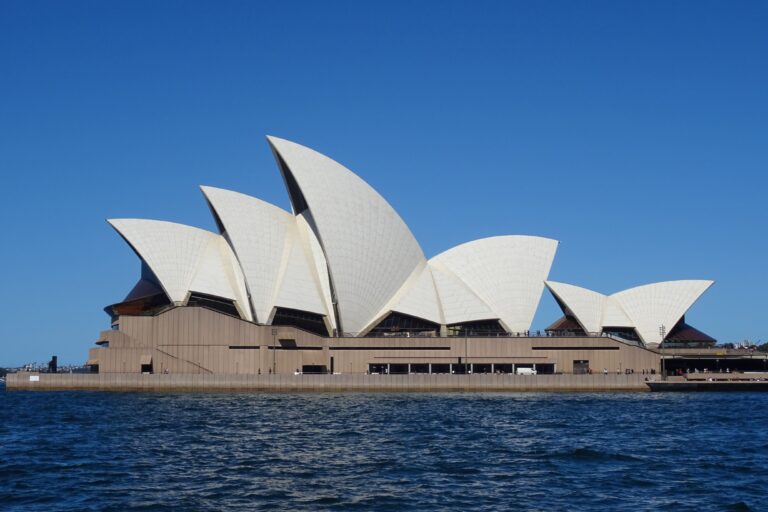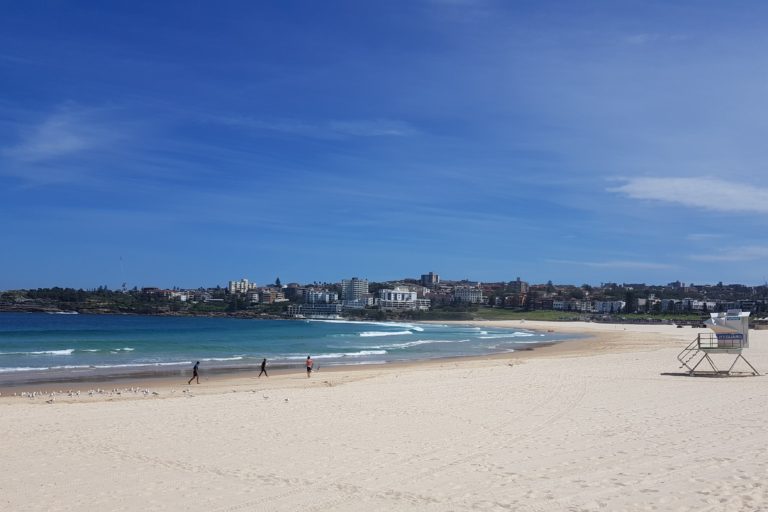By Neena Bhandari
Sydney, 15.09.2007 (IANS) Book clubs are popular in Australia, but Bollywood Clubs? Yes, they too exist, with more and more Australians cued on to Hindi films.
Curator Rebecca Bower, whose bedside table doesn’t have books but a laptop and Hindi film DVDs, has formed a Bollywood Club where a group of women watch and discuss Indian films.
“I watch a Bollywood film for half hour or so every night to unwind before sleeping,” said the curator of the Bollywood and Australia section of “Cinema India: The Art of Bollywood” exhibition, running at the Powerhouse Museum here. She is learning Hindi so she can turn off the subtitles.
The film club is only an indicator of the popularity of Bollywood movies in Australia.
“Cinema India: The Art of Bollywood” explores the phenomenon of Bollywood, primarily through film advertising materials – posters, hoardings, lobby cards and song books – from the 1930s to the present.
The exhibition gives an insight into the historical, political and cultural changes that have shaped the country. India’s struggle for independence, the search for a national identity and the influence of traditional and western cultures are all reflected in the films and marketing material.
The experience of NRIs is also examined in a section on Bollywood movies filmed in Australia.
Since 1997 the country has provided a backdrop for an increasing number of Bollywood films. Indian filmmakers have been attracted to Australia’s diverse locations and landscapes, infrastructure, post-production facilities, highly trained crews and a competitive dollar.
Initially used as the setting for fantasy song-and-dance sequences or to demonstrate the contrast between foreign and Indian values, Australian locations are becoming more important to the plot of Bollywood films.
With India contributing a growing number of skilled migrants, overseas students, business and leisure travellers, Bollywood films are cashing on the Australian appeal by incorporating aspects of Australian lifestyle.
The films in the exhibition include “Janasheen” directed by Feroz Khan, whose earlier film “Prem Agan” was the first to be scripted and filmed in Australia and started the current trend of Australia being used as a location for Bollywood films.
The first animatronic alien “Jadoo” to be used in a Bollywood film was made by James Colmer of the Australian company Bimmini Special FX, making the 2003 “Koi Mil Gaya” the first Bollywood science fiction musical.
In 2005, “Salaam Namaste” became the first film to be entirely shot in Melbourne and the state of Victoria, followed by “Heyy Babyy”, which captures the best of Sydney and New South Wales.
“Chak De! India”, shot in Melbourne and Sydney, has been one of the greatest hits this year.
“Mainstream Australians are flocking to the film. Our weekend box office figures have been better than the corresponding weekend of ‘Dhoom 2’. The response has been fantastic,” says line producer Swish MG Distribution’s CEO Marcus Georgiades.
The exhibition has devoted a special section on the tall, blue-eyed, blonde girl, best known for portraying the masked, cloaked adventuress “Hunterwali”. The unconventional stunt queen of the 1930s and 1940s was Perth-born Mary Evans or our own Fearless Nadia.
After appearing on stage and in a circus in India, Mary was “discovered” in Bombay in 1935 by brothers J.B.H. and Homi Wadia, who ran Wadia Movietone. She acted in more than 55 movies during a career spanning 27 years, attaining an unmatched level of popularity in India.
“The response to the exhibition has been very positive, the Indian community has embraced it and non-Indians have enjoyed it. There are an increasing number of Anglo-Aussies coming to see it”, said Bower, who ranks Shah Rukh Khan and Kajol as her favourite stars with a special fondness for Nargis and Raj Kapoor.
“Amitabh (Bachchan) leaves me cold though my mother is a big fan of his,” Bower told IANS.
Visitors can also see some dazzling costumes as well as original film trailers and song and dance sequences featuring the most celebrated stars of Indian cinema.
A range of public programmes and special events including talks, film screenings and Indian cooking demonstrations have been held since June in conjunction with the exhibition, which is on display until Nov 11.
© Copyright Neena Bhandari. All rights reserved. Republication, copying or using information or photographs from neenabhandari.com content is expressly prohibited without the permission of the writer and the media outlet syndicating or publishing the article.



